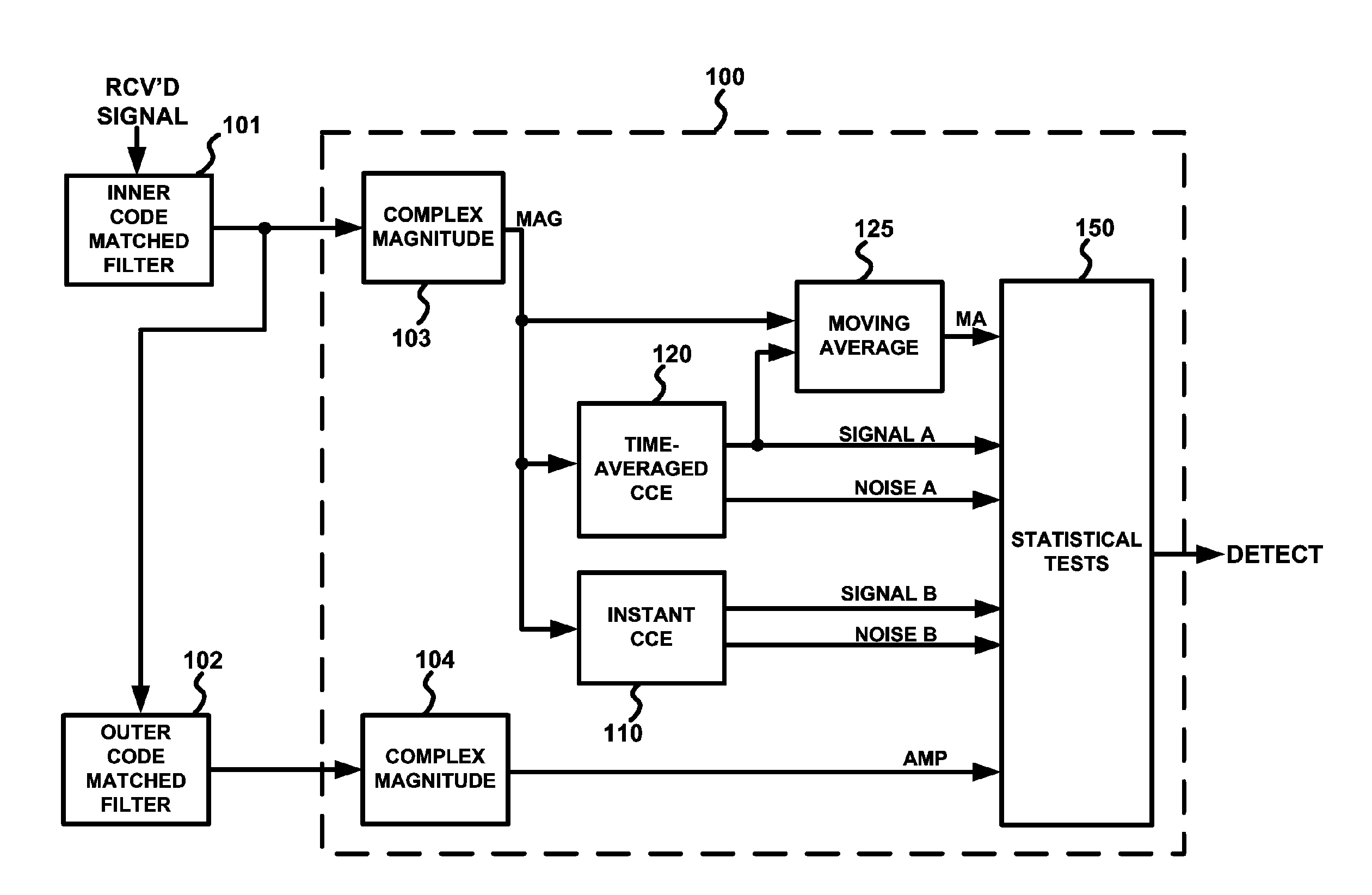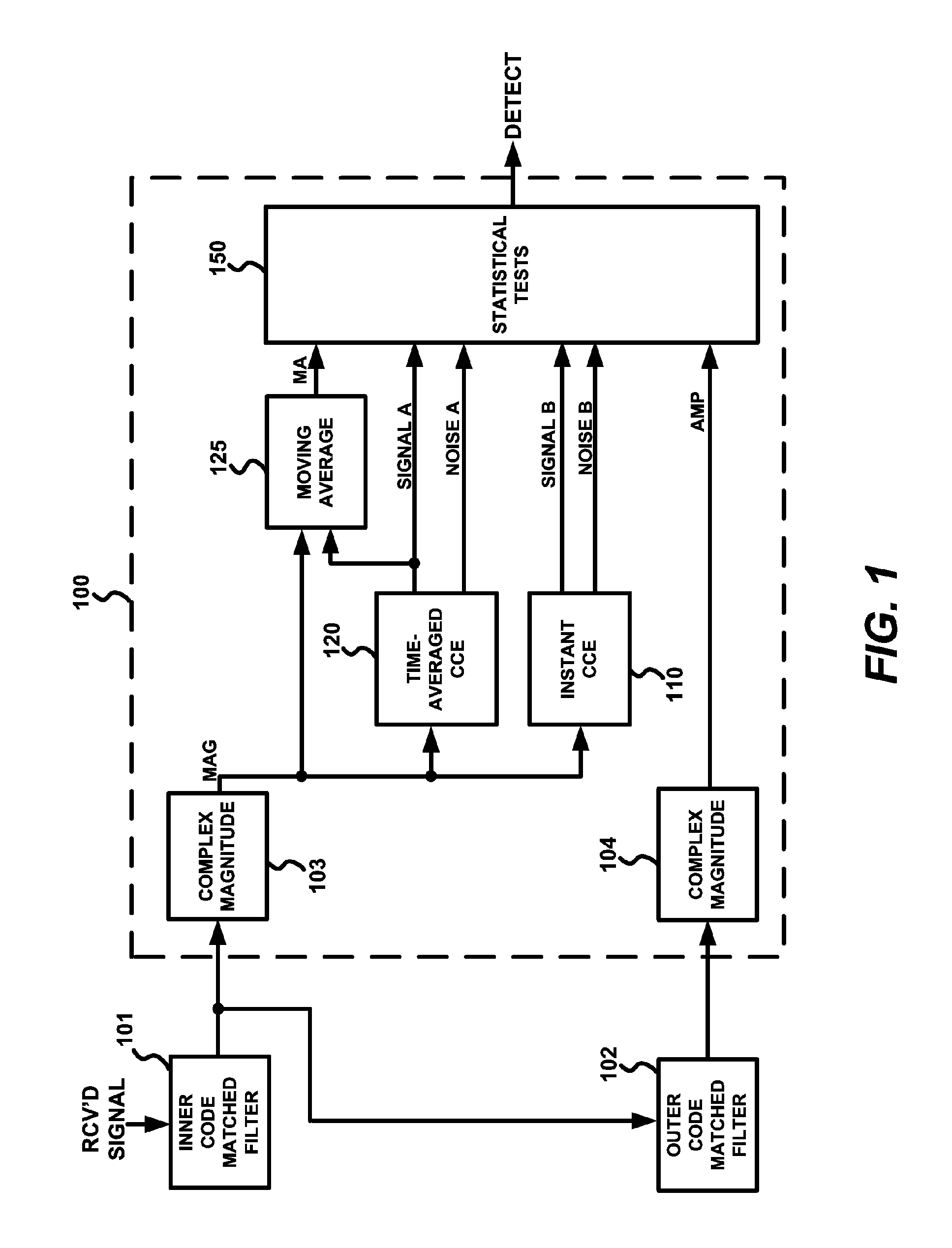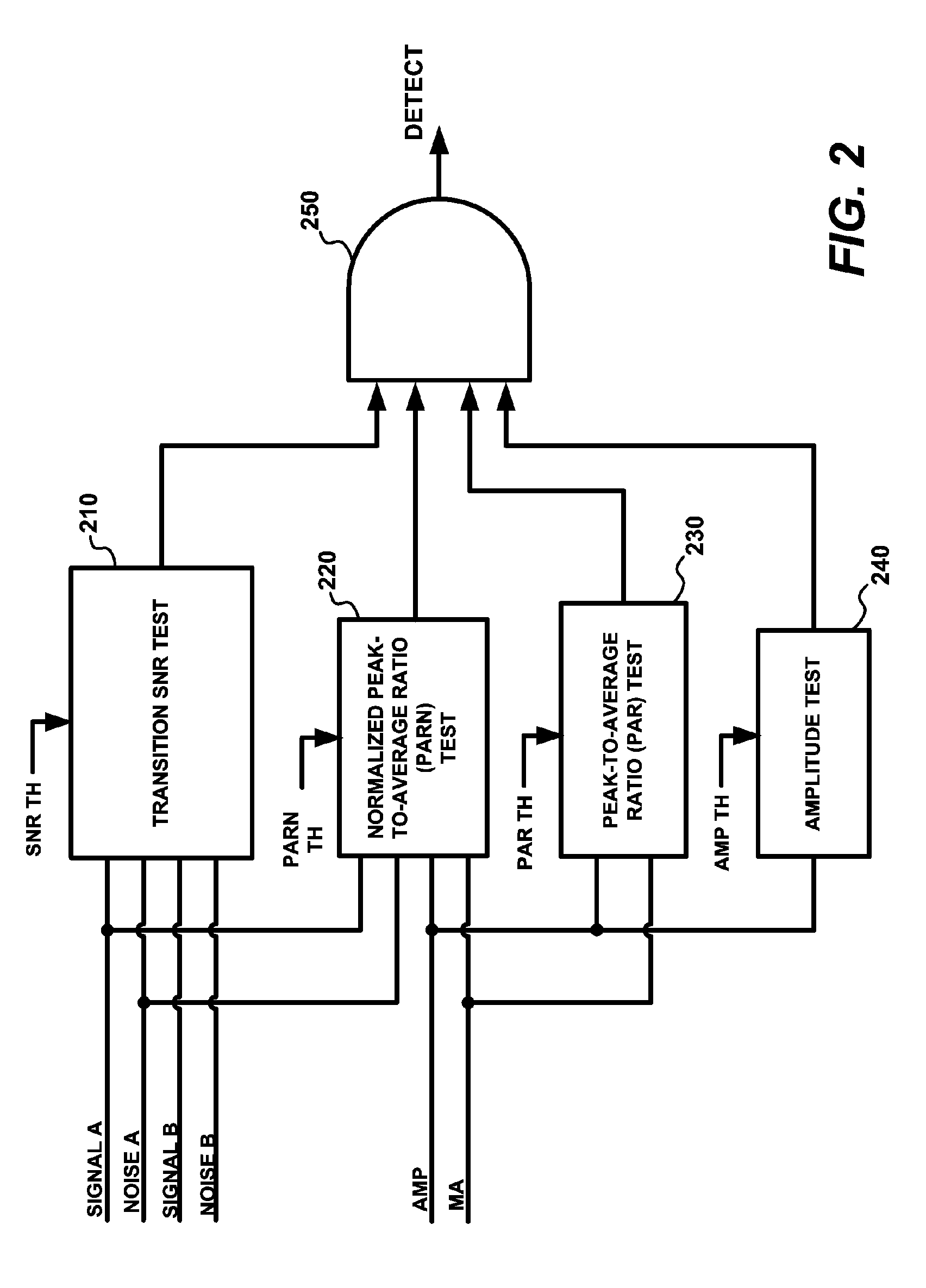Method and device of peak detection in preamble synchronization for direct sequence spread spectrum communication
a technology of direct sequence spread spectrum and peak detection, applied in the field of direct sequence spread sequence (dsss) communication methods and systems, can solve the problems of synchronization misses, false alarms, and difficult selection of appropriate thresholds to satisfy all situations, and achieve accurate estimation of signal and noise levels
- Summary
- Abstract
- Description
- Claims
- Application Information
AI Technical Summary
Benefits of technology
Problems solved by technology
Method used
Image
Examples
Embodiment Construction
[0032]FIG. 1 shows a block diagram of an exemplary embodiment of a preamble peak detection system 100, in accordance with the present invention. The system 100 operates on signals provided by an inner code matched filter (ICMF) block 101 and from signals provided by an outer code matched filter (OCMF) block 102. The ICMF block 101 includes inner code matched filtering as well as demodulation that removes phase rotation. The arrangement, implementation and operation of the ICMF 101 and OCMF 102 are well-known in the art. Exemplary waveforms of the magnitude of signals at the input of the ICMF block 101, the output of the ICMF block 101, and the output of OCMF block 102 are shown in FIGS. 6A-6C, respectively.
[0033]As shown in FIG. 1, the exemplary preamble peak detection system 100 includes two complex magnitude blocks 103 and 104, an instant channel condition estimation (CCE) block 110, a time-averaged CCE block 120, a moving average block 125 and a statistical tests block 150.
[0034]...
PUM
 Login to View More
Login to View More Abstract
Description
Claims
Application Information
 Login to View More
Login to View More - R&D
- Intellectual Property
- Life Sciences
- Materials
- Tech Scout
- Unparalleled Data Quality
- Higher Quality Content
- 60% Fewer Hallucinations
Browse by: Latest US Patents, China's latest patents, Technical Efficacy Thesaurus, Application Domain, Technology Topic, Popular Technical Reports.
© 2025 PatSnap. All rights reserved.Legal|Privacy policy|Modern Slavery Act Transparency Statement|Sitemap|About US| Contact US: help@patsnap.com



